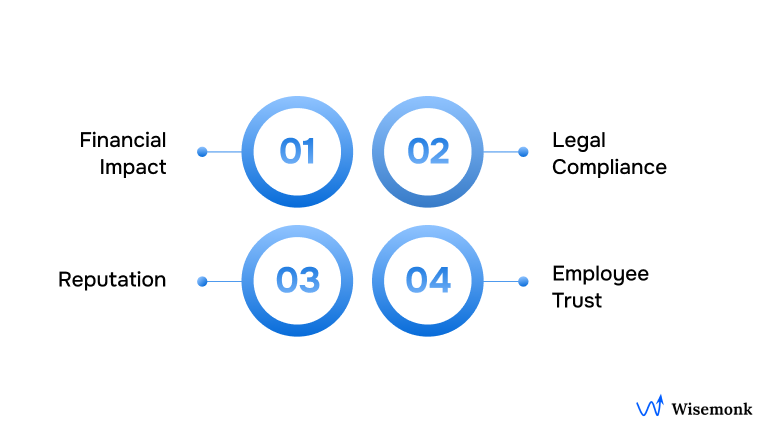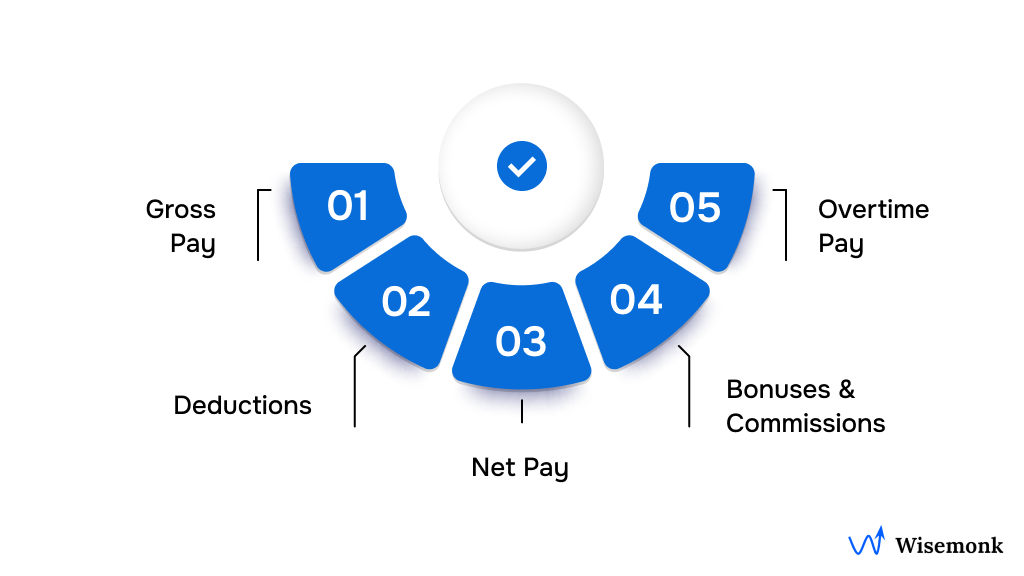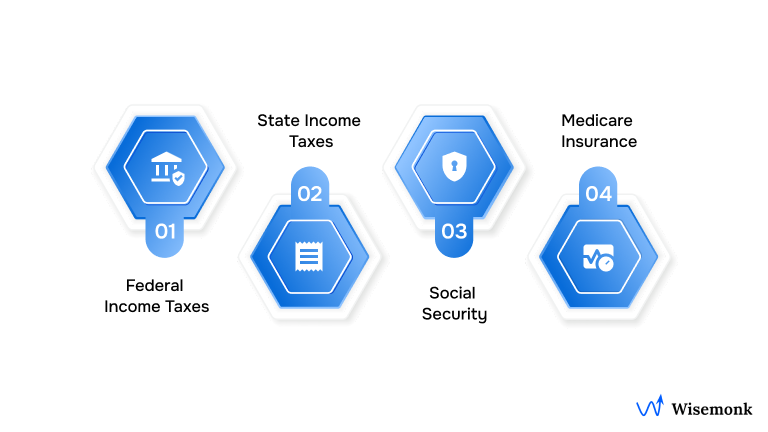- Payroll management involves calculating wages, handling tax deductions, administering benefits, and ensuring compliance with labor laws.
- Payroll cycles, such as weekly, bi-weekly, or monthly, determine how often pay and deductions are processed.
- Accurate payroll requires maintaining up-to-date employee records, including hours worked, salary, and deductions.
- Ensuring payroll accuracy involves using reliable software, double-checking deductions, and staying current on tax regulations.
- Regular audits are essential to verify all payroll calculations and ensure compliance with tax laws and employee rights.
Are you finding it challenging to keep track of the various payroll components while ensuring compliance with ever-changing regulations? Payroll management involves more than just paying employees; it includes calculating wages, handling tax deductions, administering benefits, and maintaining legal compliance.
For employers, overlooking even the smallest detail can result in costly penalties or frustrated employees. Understanding how payroll works and what it entails is essential to avoid these issues and keep operations running smoothly.
In this blog, we will break down the key components of payroll and the processes involved to help employers streamline their payroll operations.
What is Payroll?
In simple terms, payroll is the process of paying a company's employees for the work they've done. It involves several steps: compiling a list of employees to be paid, tracking hours worked, calculating wages, distributing salaries on time, and recording the payroll expense.
However, payroll is not just about issuing paychecks. It’s a detailed process that requires coordination across different teams to ensure everything runs smoothly. From tax calculations to benefit deductions, there are multiple moving parts. But by standardizing processes, selecting the right service delivery model, and leveraging modern technology, managing payroll becomes much more efficient and less prone to error.
What is Payroll Cycle?
The payroll cycle refers to how often employees are paid. It determines when payroll is processed and wages are distributed. Common cycles include weekly, bi-weekly, semi-monthly, and monthly. The cycle length impacts how frequently hours, bonuses, deductions, and taxes are calculated. Choosing the right cycle ensures timely payments and helps businesses stay compliant with tax and labor laws.
Why is Payroll Management Essential for a Business?

Payroll is not just about paying employees, it plays a critical role in the financial health and reputation of a business. Beyond salary disbursements, payroll impacts a company’s net income and is subject to various laws and regulations. Maintaining accurate and timely payroll records is crucial for staying compliant and building trust within the organization.
Here’s why payroll management is essential:
- Financial Impact: Payroll is one of the largest expenses for most businesses, directly affecting net income.
- Legal Compliance: Businesses must comply with tax laws and employment regulations to avoid penalties.
- Reputation: Inaccurate or delayed payroll can lead to perceptions of financial instability and poor management.
- Employee Trust: A well-managed payroll system fosters trust and satisfaction among employees.
What Challenges Are Involved in Payroll Processing?
Payroll processing can be complex, involving several challenges that businesses must overcome to ensure accuracy and compliance. From calculating tax deductions to keeping up with changing regulations, these obstacles can lead to costly mistakes if not managed properly.
Common challenges include:
- Complex Tax Regulations: Constantly changing federal, state, and local tax laws can make it difficult to stay compliant.
- Data Accuracy: Ensuring accurate tracking of employee hours, pay rates, and benefits is crucial but time-consuming.
- Compliance Risks: Failing to meet payroll deadlines or maintain proper documentation can result in penalties.
- Employee Expectations: Any discrepancies in payroll can cause dissatisfaction and erode trust among employees.
By addressing these challenges effectively, businesses can streamline payroll processing, minimize risks, and ensure a smooth and reliable payment experience for their employees.
Core Components of Payroll

Payroll consists of several core components that contribute to the total compensation an employee receives. Each component plays a crucial role in ensuring that employees are paid accurately and in compliance with relevant laws. Here's a breakdown of the core components:
Gross Pay
Gross pay is the total earnings of an employee before any deductions are made. It includes the base salary, hourly wages, and any additional compensation such as bonuses or overtime.
- Base Salary: Regular pay based on the employee’s contract or position.
- Additional Earnings: Includes commissions, incentives, and bonuses.
Deductions
Deductions are amounts withheld from an employee's gross pay. These are used to cover taxes, benefits, and other obligations.
- Tax Deductions: Federal, state, Social Security, and Medicare taxes.
- Benefit Deductions: Health insurance, retirement contributions, and other voluntary benefits.
Net Pay
Net pay is the amount an employee takes home after deductions. This is the actual paycheck amount that employees receive.
- Calculated: Subtract total deductions from gross pay.
- Take-home Pay: The final amount an employee receives after all deductions.
Bonuses and Commissions
Bonuses and commissions are additional forms of compensation, often given based on performance or company profits.
- Bonuses: One-time payments based on performance or milestones.
- Commissions: Earnings based on sales or business deals closed.
Overtime Pay
Overtime pay is extra compensation for hours worked beyond the standard workweek, typically paid at a higher rate.
- Standard Overtime: Often 1.5 times the regular hourly rate.
- Eligibility: Usually applies to non-exempt employees working more than 40 hours per week.
These core components form the foundation of payroll and must be managed accurately to ensure employees are compensated correctly and on time.
Steps for Completing Payroll
Completing payroll involves a series of organized steps to ensure accuracy and compliance. Here’s a breakdown of the essential steps:
- Collect Employee Information: Gather all necessary details such as hours worked, salary, overtime, and any deductions.
- Calculate Gross Pay: Determine the total earnings for each employee, including base salary, bonuses, and overtime.
- Apply Deductions: Deduct taxes (federal, state, and local), benefits contributions, and retirement plan contributions.
- Calculate Net Pay: Subtract deductions from the gross pay to determine the employee’s final paycheck amount.
- Distribute Payments: Pay employees via direct deposit, checks, or other agreed-upon methods.
- Record Payroll Transactions: Keep detailed records of payroll for compliance and future reference.
- File Tax Reports: Submit the required payroll tax filings to government authorities on time.
By following these steps, businesses can ensure a smooth payroll process that is both accurate and compliant, ultimately fostering employee satisfaction and operational efficiency.
Taxes Involved in Payroll

The structure of payroll can often be confusing for employees, especially when their take-home pay is less than expected due to various deductions. Understanding how payroll is calculated is essential for both HR managers and employees, as it ensures transparency and helps maintain compliance with federal and state regulations.
Federal Income Taxes
Federal income tax is one of the most significant deductions from an employee's paycheck. This tax is based on the employee’s earnings, filing status, and the allowances they claim on their W-4 form. It is collected by the federal government to fund programs such as national defense, infrastructure, and social services.
- Tax Brackets: Federal tax rates range from 10% to 37%, depending on income levels.
- W-4 Form: Employees must fill out this form to indicate their filing status and any dependents or exemptions, which determines the withholding amount.
- Payroll Calculation: The employer uses the W-4 form to calculate the appropriate federal income tax to withhold each pay period.
State Income Taxes
State income taxes vary from state to state and are another key deduction that affects an employee’s paycheck. These taxes are used to fund state-level services, including education, healthcare, and infrastructure. Not every state has an income tax, but those that do may have different rates and rules.
- State-Specific Rates: Each state determines its tax rates, which can range from a flat rate to progressive rates based on income.
- Residency: An employee’s state of residence determines the state income tax withheld.
- State Filing Forms: Similar to the W-4, some states require their own withholding forms to determine the tax amount to be deducted.
Social Security
Social Security tax is a mandatory deduction that helps fund the federal Social Security program, which provides benefits to retirees, disabled workers, and survivors of deceased workers. Both the employee and employer contribute an equal portion to Social Security.
- Tax Rate: The employee’s contribution is typically 6.2% of their earnings, and the employer matches this amount.
- Wage Limits: The Social Security tax is only applied to earnings up to a certain limit, which changes annually.
- Purpose: The funds collected help provide retirement and disability benefits to qualified individuals.
Medicare Insurance
Medicare is a federal health insurance program primarily for people aged 65 and older, and it is funded through payroll taxes. Like Social Security, both the employee and employer share the cost of Medicare insurance.
- Tax Rate: The standard Medicare tax rate is 1.45% for both the employee and employer, totaling 2.9%.
- Additional Medicare Tax: For higher-income earners, an additional tax is applied on income above a certain threshold.
- No Wage Limits: Unlike Social Security, there is no maximum wage base for Medicare taxes; all earnings are subject to this tax.
By understanding the structure of payroll and the different deductions that apply, businesses can ensure accurate and compliant payroll processing while also providing employees with the clarity they need regarding their pay.
How to Ensure Accuracy in Payroll?
Ensuring accuracy in payroll is crucial for maintaining employee satisfaction and staying compliant with regulations. Mistakes can lead to legal issues, penalties, and low morale. Here are key steps to ensure payroll accuracy:
- Maintain Accurate Employee Records: Keep up-to-date records of employee details, such as hours worked, pay rates, tax forms, and benefits.
- Double-Check Deductions: Regularly review tax rates, benefits, and other deductions to ensure they are correctly applied to each paycheck.
- Use Reliable Payroll Software: Leverage payroll management software to automate calculations and reduce human errors.
- Stay Updated on Tax Laws: Ensure that the latest tax rates and labor laws are incorporated into payroll processes.
- Conduct Regular Audits: Perform periodic payroll audits to verify that all calculations and deductions are accurate and compliant.
By following these practices, businesses can ensure payroll accuracy, minimize errors, and maintain a smooth and compliant payroll process.
Wrapping Up
In conclusion, payroll management is a crucial aspect of running a business, requiring meticulous attention to detail and adherence to various regulations. By understanding the key components and following best practices, companies can avoid common mistakes and ensure a smooth payroll process. Ensuring payroll accuracy not only saves time but also fosters trust with employees and ensures the business remains compliant with laws. With the right tools and systems in place, payroll can be a streamlined and efficient process.
However, many businesses struggle with navigating the complexities of payroll and compliance, especially when managing a growing workforce. This is where Wisemonk comes in as a solution. Wisemonk provides comprehensive payroll and compliance services that streamline these processes, ensuring timely and accurate payroll management while meeting all relevant regulatory requirements.
Ready to streamline your payroll? Check out our pricing options and contact us to get started on a hassle-free payroll solution today!





.webp)

.webp)